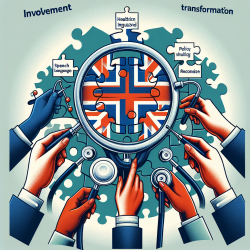Introduction
In the realm of adolescent health, understanding the factors that influence risky behaviors such as alcohol consumption is crucial. Recent research titled Neighborhood Income Inequality and Alcohol Use among Adolescents in Boston, Massachusetts sheds light on the relationship between income inequality and alcohol use among adolescents. As practitioners dedicated to fostering positive outcomes for children, it is essential to explore how these findings can inform our practice and encourage further research.
Key Findings from the Research
The study analyzed data from the 2008 Boston Youth Survey, involving 1,878 adolescents across 38 neighborhoods. The findings revealed a significant association between neighborhood income inequality and alcohol consumption among adolescents. Specifically, those residing in neighborhoods with higher income inequality were more likely to have consumed alcohol in the past 30 days.
Interestingly, the study found that social cohesion and depressive symptoms did not mediate the relationship between income inequality and alcohol use. This suggests that other factors may play a role in influencing adolescent drinking behaviors in these contexts.
Implications for Practitioners
As speech-language pathologists, understanding the broader social determinants of health can enhance our ability to support children effectively. Here are some ways to incorporate these findings into practice:
- Community Engagement: Collaborate with community organizations and schools to address income inequality and its impact on adolescent health. This can involve advocating for policies that promote equitable access to resources and opportunities.
- Holistic Assessment: Consider the socio-economic context of the children you work with. Understanding the neighborhood dynamics can provide valuable insights into potential risk factors affecting their communication and social development.
- Prevention Programs: Develop and implement programs that focus on building resilience and coping strategies among adolescents. These programs can address the emotional and social challenges posed by income inequality.
Encouraging Further Research
While this study provides valuable insights, it also highlights the need for further research. Investigating the mechanisms through which income inequality influences adolescent behavior can help develop targeted interventions. Future studies could explore:
- The role of family dynamics and parental influence in moderating the effects of income inequality on adolescent alcohol use.
- Longitudinal studies to assess the long-term impact of income inequality on health behaviors and outcomes.
- The potential protective factors that can mitigate the negative effects of income inequality on adolescents.
Conclusion
The research on neighborhood income inequality and adolescent alcohol use offers valuable insights for practitioners committed to improving outcomes for children. By understanding the broader social context and advocating for equitable policies, we can contribute to healthier communities and empower adolescents to make positive choices.
To read the original research paper, please follow this link: Neighborhood Income Inequality and Alcohol Use among Adolescents in Boston, Massachusetts.










